Genetic workflows – Steel structure
Introduction:
Evolutionary Computation is a branch of computation that is quite unique. For one, it is not specific to any problem or task. It is a framework for solving generic problems. This offers interesting capacities for the design process where we are usually the ones iterating over a design decision in order to evaluate its effectiveness. If we could abstract the forces which guide a design decision, then we could potentially utilize Evolutionary computation, and specifically Genetic Algorithms, to assist us in finding optimal solutions given a number of design criteria.
For this to work, we must know the design task very well. It’s parameters must be well defined into a ‘solution space’ bound by the ranges of our parameters. This is a space where good and bad solutions exist, and the Evolutionary Solver will search through it to find the best solutions.
Procedure:
A design task (steel structure) was chosen to search the solution for the most optimal solution. I used Galapagos to determine the optimum design solution for the design of a steel structure. In the process, Millipede helped me to give inputs for material(steel) and gave me precise outputs for maximum deflection, stresses and bending moments for the structure. The deflection was then recorded to get highest and lowest fitness value – maximum and minimum deflection.
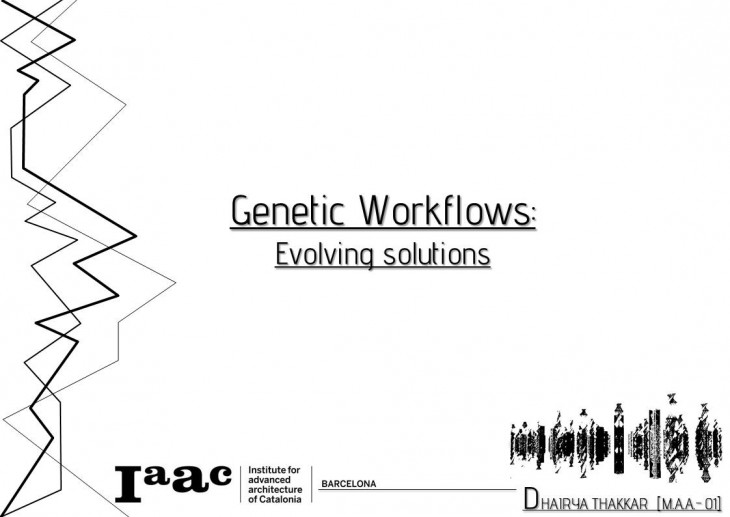
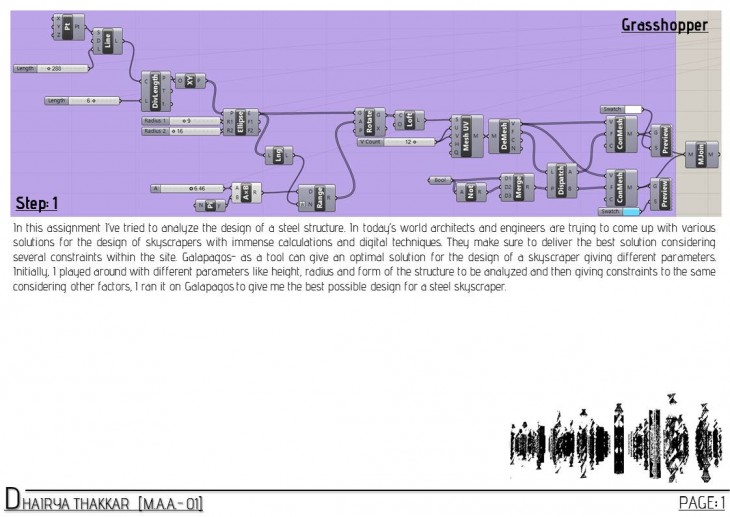
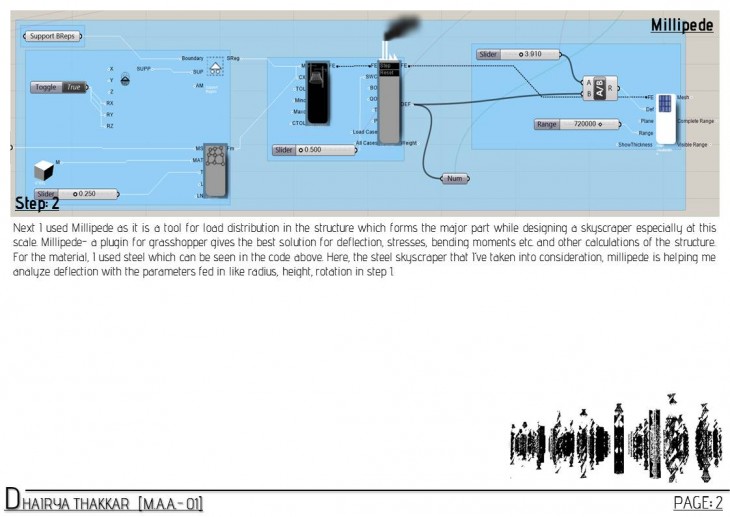
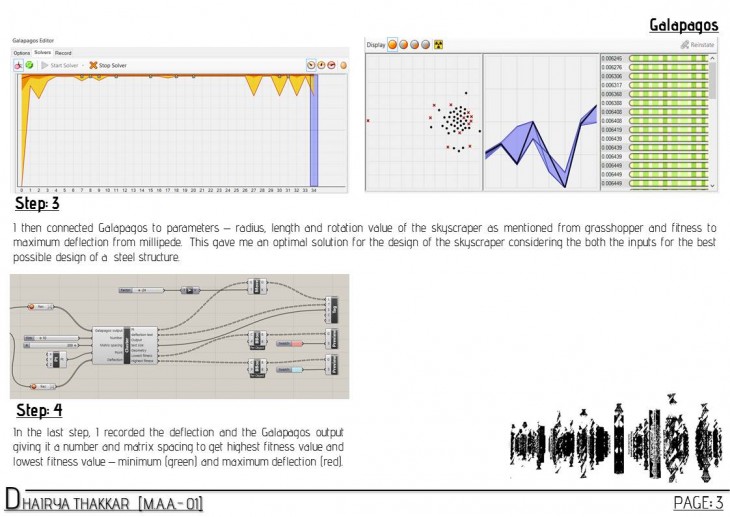
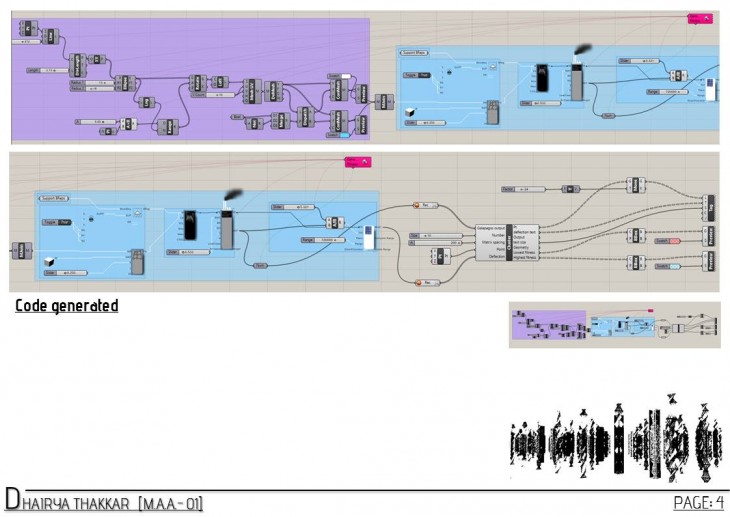
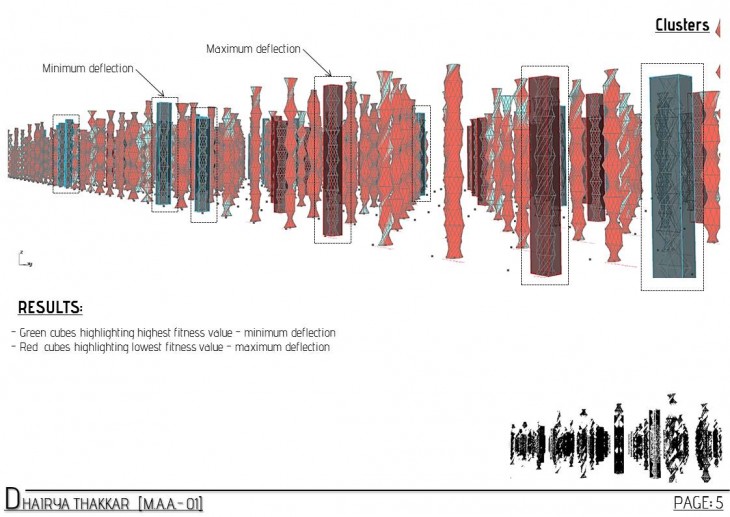
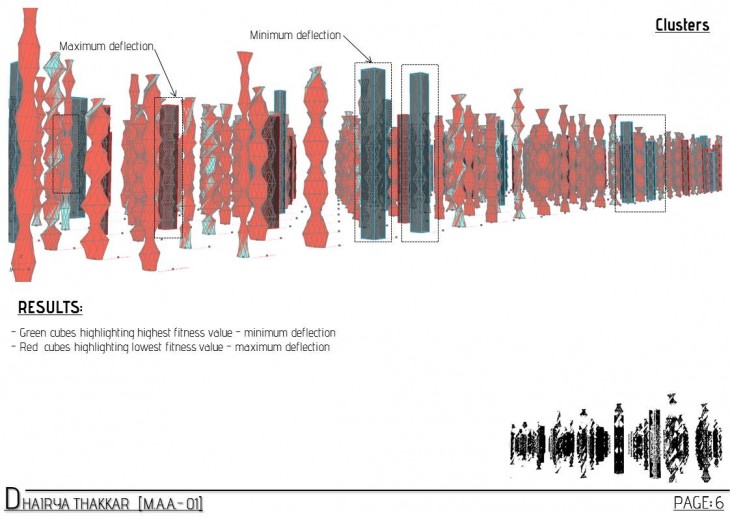
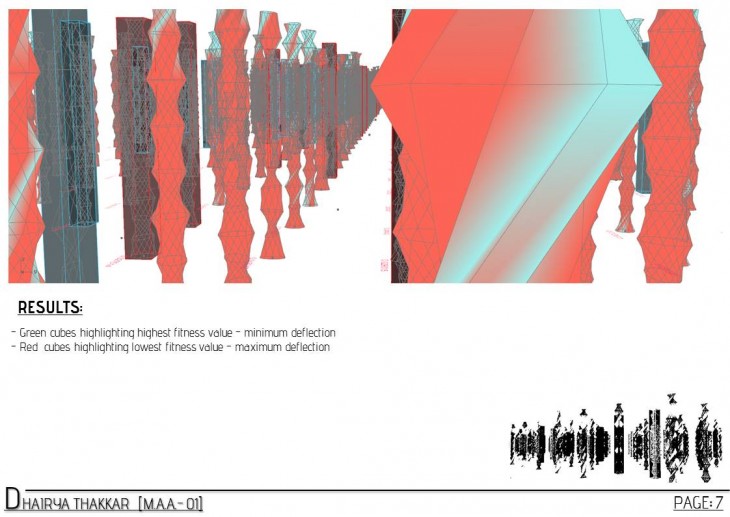
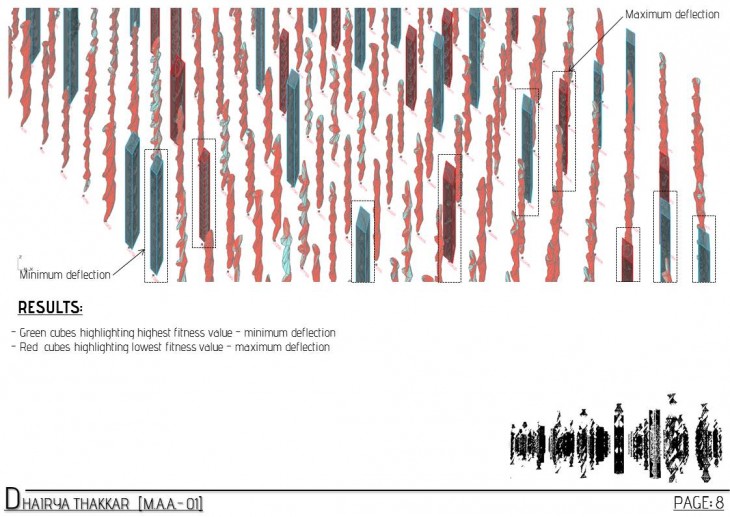
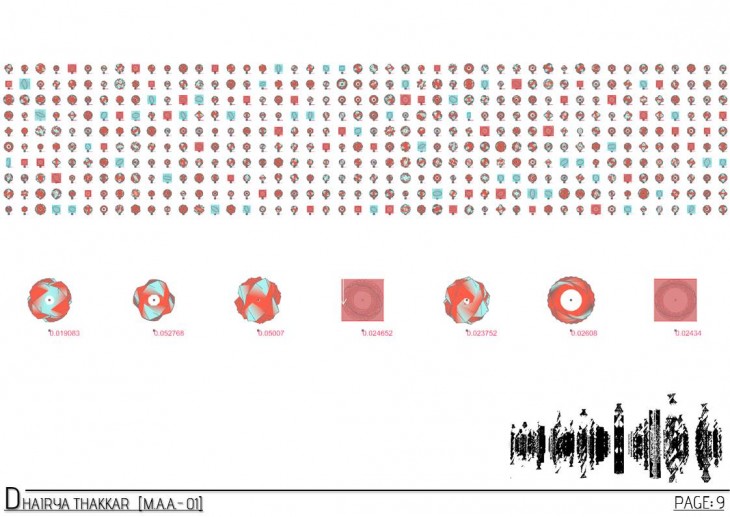
Conclusion:
Using Galapagos while designing or planning, can optimize the efficiency and provide the best solution for the analyzed components.
Genetic workflows: Evolving solutions is a project of IaaC, Institute for Advanced Architecture of Catalonia developed at Master of Advanced Architecture in 2015/16 by:
Student:
- Dhairya Thakkar
Faculty:
- Luis Fraguda
- Rodrigo Aguirre